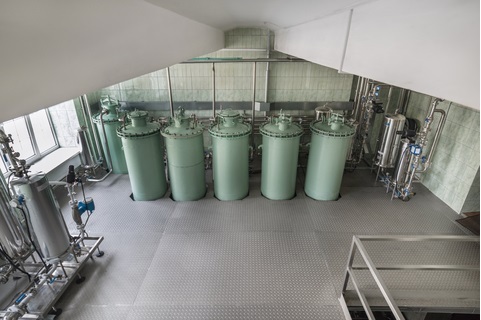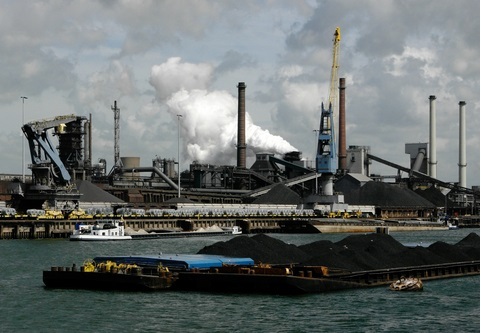
 Data Structure
Data Structure Networking
Networking RDBMS
RDBMS Operating System
Operating System Java
Java MS Excel
MS Excel iOS
iOS HTML
HTML CSS
CSS Android
Android Python
Python C Programming
C Programming C++
C++ C#
C# MongoDB
MongoDB MySQL
MySQL Javascript
Javascript PHP
PHP
- Selected Reading
- UPSC IAS Exams Notes
- Developer's Best Practices
- Questions and Answers
- Effective Resume Writing
- HR Interview Questions
- Computer Glossary
- Who is Who
Bioadsorption: An Overview
Introduction
Bioadsorption is the process of removal of pollutants or toxins from a liquid or gaseous medium using biological materials. It is an effective, economical, and eco-friendly alternative to conventional methods of adsorption.
Bioadsorption has been widely studied for its potential applications in wastewater treatment, removal of heavy metals, and environmental remediation. It is a complex process that involves interactions between the adsorbent material and the target pollutant.
The content below provides an overview of bioadsorption, including its mechanisms, types, applications, and future prospects.
Mechanisms of Bioadsorption
The mechanisms of bioadsorption can be classified into two categories: physical and chemical. Physical adsorption involves the weak van der Waals forces between the adsorbent and the target pollutant. This process is typically reversible and occurs when the pollutant molecules come into contact with the adsorbent surface. Physical adsorption is dependent on factors such as temperature, pH, and concentration of the pollutant.
Chemical adsorption, on the other hand, involves the formation of chemical bonds between the adsorbent and the pollutant. This process is typically irreversible and occurs when the adsorbent surface has specific chemical functional groups that can react with the pollutant. Chemical adsorption is dependent on factors such as the chemical composition of the adsorbent, the pH of the medium, and the type of pollutant.

Types of Bioadsorbents
Bioadsorbents can be broadly classified into two categories: natural and synthetic. Natural bio adsorbents are derived from natural sources such as plants, algae, fungi, and bacteria. These materials have the advantage of being renewable, biodegradable, and non-toxic. However, their use is limited by their availability, variability, and low adsorption capacity.
Synthetic Bioadsorbents, on the other hand, are materials that are synthesized in the laboratory. These materials have the advantage of being customizable, reproducible, and have a high adsorption capacity. However, their use is limited by their high cost and potential toxicity.
Applications of Bioadsorption
Bio adsorption has a wide range of applications in various fields, including environmental remediation, wastewater treatment, and removal of heavy metals. The following are some of the applications of bioadsorption ?
Environmental Remediation: Bio adsorption is a promising technology for the removal of pollutants from contaminated soils and water bodies. It has been shown to be effective in removing organic and inorganic pollutants, including pesticides, dyes, and heavy metals.
Wastewater Treatment
Bioadsorption is an effective method for treating industrial wastewater. It can remove pollutants such as dyes, heavy metals, and organic compounds. Bio adsorption can be combined with other treatment methods, such as biological and chemical treatment, to enhance the overall efficiency of wastewater treatment.
Removal of Heavy Metals
Bioadsorption has been widely studied for the removal of heavy metals from contaminated water sources. Heavy metals such as lead, cadmium, and mercury are toxic to humans and the environment. Bioadsorption has been shown to be an effective and eco-friendly method for the removal of heavy metals from water sources.

Future Prospects of Bioadsorption
The future prospects of bioadsorption are promising, as it is an effective, eco-friendly, and economical alternative to conventional methods of adsorption. Research in the field of bio adsorption is focused on developing novel bio adsorbents that have high adsorption capacity, selectivity, and stability. The following are some of the areas of research in bio adsorption ?
Development of Novel Bioadsorbents Research is focused on developing novel bioadsorbents that have high adsorption capacity, selectivity, and stability. Novel bioadsorbents can be derived from natural sources or synthesized in the laboratory.
Some of the promising natural sources for bioadsorbents include agricultural waste, marine waste, and microorganisms. Synthetic bio-adsorbents can be designed to have specific functional groups that can selectively adsorb certain pollutants.
Process Optimization
The efficiency of bioadsorption can be enhanced by optimizing the process parameters such as temperature, pH, contact time, and concentration of the pollutant. Process optimization can help to maximize the adsorption capacity and minimize the cost of the process.
Scale-up of Bioadsorption
One of the challenges in the application of bioadsorption is the scale-up of the process. The adsorption capacity of bioadsorbents is often limited by their size and shape. Scaling up the process requires the development of new technologies that can increase the surface area of the adsorbent and improve the mass transfer rate.
Combination of Bioadsorption with Other Treatment Methods
Bioadsorption can be combined with other treatment methods such as biological and chemical treatment to enhance the overall efficiency of the treatment process. This approach can help to remove a wide range of pollutants from contaminated water sources.
Conclusion
Bioadsorption is an effective, eco-friendly, and economical alternative to conventional methods of adsorption. It has a wide range of applications in various fields, including environmental remediation, wastewater treatment, and removal of heavy metals. The mechanisms of bio adsorption can be classified into physical and chemical, and bio adsorbents can be classified into natural and synthetic.
The future prospects of bio adsorption are promising, as research is focused on developing novel bio adsorbents, optimizing the process parameters, scaling up the process, and combining bioadsorption with other treatment methods. With further research and development, bioadsorption has the potential to become a leading technology for the removal of pollutants from contaminated water sources.

